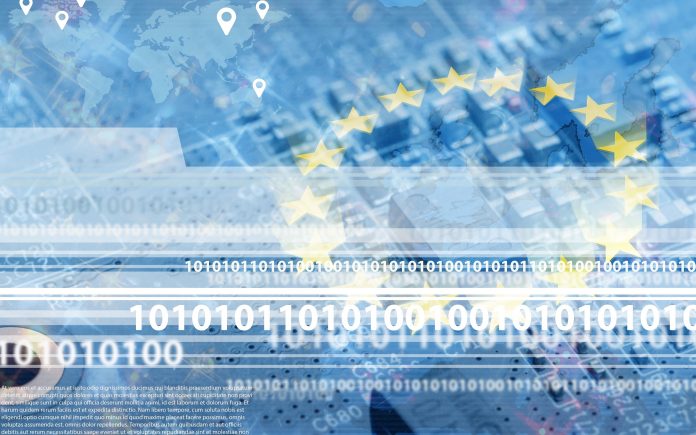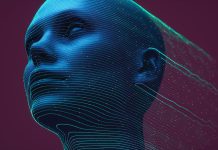Louise Grabo, President of the EESC‘s Observatory of the Digital Transition and the Single Market, looks at a green and digital recovery in Europe after the COVID crisis
The European Commission has promised citizens a green and digital recovery when Europe starts to reopen after the COVID crisis. Ursula von der Leyen, President of the European Commission, has also made some bold and inspiring promises: a European Green Deal and climate neutrality by 2050, making the 2020s a European Digital Decade and a stronger geopolitical Europe. But will she succeed? Failure is not an option.
Digitalisation and the COVID crisis
The COVID crisis has accelerated digitalisation, that is for sure. Working remotely is the new normal and our daily habits have changed. The tech sector is growing rapidly in Europe and is creating new products and services. At the same time, new technologies are helping us to combat the virus. For example, artificial intelligence (AI) has been used to adapt COVID-19 vaccines to new variants and to speed up diagnosis and aid drug development, thus saving many people’s lives. Moreover, blockchain technology has been used to distribute vaccines in an efficient way around the globe, and platform companies have served many people with food in lockdown during the pandemic. Without technology and innovation, the pandemic would have hit us even harder, which illustrates the need for further digitalisation and innovation to increase our resilience against future crises.
New technologies are revolutionising the world and bring us hope that we’ll solve the difficulties that await. At the same time, many of these new technologies are not being used to the extent that they could. SMEs are having trouble with adopting AI and machine learning even though they see a need for it, and the public sector is still not using new technologies as much as it could. In 2020, the Swedish trade union Vision started a project on feminist digitalisation for employees working in the public sector – specifically, how the public sector could use technology to make working lives easier for people employed in healthcare (which in Sweden is mostly women). More such projects are needed across the EU to boost digitalisation of the public sector as well as the private sector, thereby making life easier for working people in various ways.
Speed up the pace of digitalisation in Europe
Unfortunately, the EU is one step behind countries like the U.S. and China when it comes to digitalisation. Despite the aims of the Lisbon Strategy from 2000 and the Europe 2020 strategy from 2010, the last two decades have been characterised by the slow adoption of digital technologies across the EU economy and a dwindling manufacturing and technology base. Since 2016, only 10% of the new entrants into the top two 500 R&D firms have been European, compared to 32% for the U.S. and 39% from China. More needs to be done to speed up the pace of digitalisation in Europe and to make the transition inclusive and fair.
For me as the President of the digital transition observatory in the EESC and the youngest member of the Committee overall, I think we have an important role to play in this transition. In many respects, our work will be about tearing down barriers to digitalisation. We have to prevent the Single Market from becoming fragmented, so that consumers can access the same digital services in all EU countries and companies can offer them just as broadly. Furthermore, we need to support the digital transition through investments in infrastructure so that digital tools and services are accessible to all EU citizens. The digital transformation should benefit everyone, and no one has to be left behind. The difficulties lie in balancing the need for regulations in a way that promotes equality and inclusion, but at the same time encourages innovations and the spread of new technologies. But I’m confident that those difficulties can be overcome.
Steps forward on the digital transition
The Commission is taking steps forward in the digital transition with a new industrial strategy, a new and AI regulatory framework, 2030 Digital Compass and by promoting deep technologies with hubs across Europe to stimulate innovation. We in the EESC have a responsibility to push the regulations in the right direction and make the digital transition accessible for everyone. As Ursula von der Leyen said during her State of the Union speech in September last year, “we want to lead the way, the European way, to the Digital Age: based on our values, our strength, our global ambitions”. As a member of the EESC, I see it as my job to make sure that the Commission stays true to that ambition. (1)
Europe Fit for the Digital Age
In March this year, Ministers who represent the Member States of the EU signed three Declarations to collaborate resources to push forward the rollout of clean digital technologies, promote international connectivity, for example. These concrete commitments will assist in accelerating Europe’s green and digital transformation plus they will play a part in the goals and vision of Europe’s Digital Decade.
Margrethe Vestager, Executive Vice-President for a Europe fit for the Digital Age, commented: “The new commitments made…strengthen our joint ambitions for a human-centred approach to digitalisation. With several Member states signing, the declarations consolidate commitments within three areas, namely connectivity, start-ups and clean digital technologies, supporting our ambitions towards a more competitive, inclusive and green Europe.” (1)
Also, in March this year, the European Commission adopted the first strategic plan for Horizon Europe. A Europe fit for the digital age is just one of the EU’s priorities as part of this, so we should leave the last word to Margrethe Vestager, who provides further comment: “This Plan provides a frame for top quality, excellence-based research and innovation to be delivered with the Horizon Europe Work Programme. With this strategic orientation we ensure that research and innovation investments can contribute to a recovery process based on the twin green and digital transition, resilience and open strategic autonomy.”











